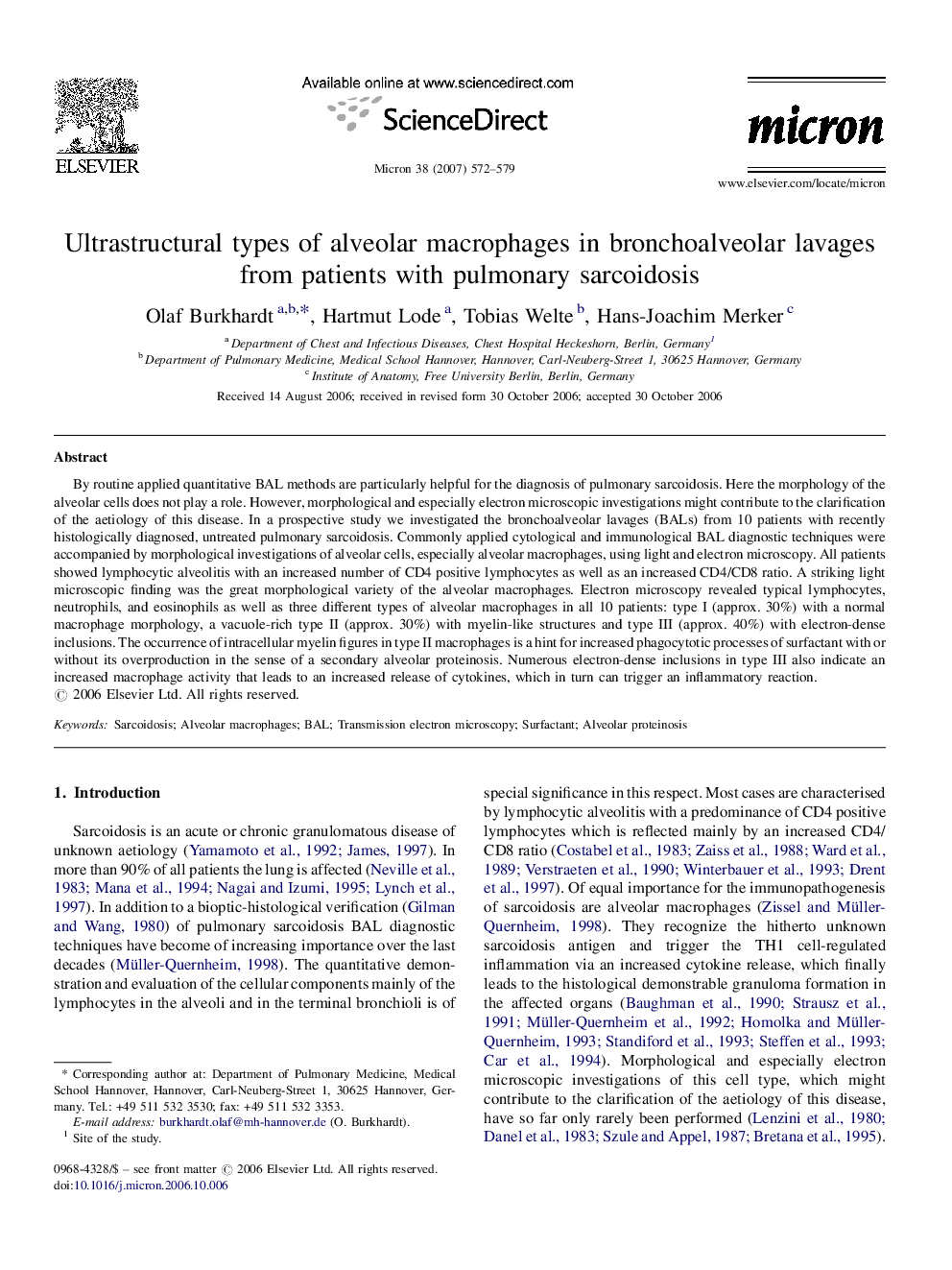| Article ID | Journal | Published Year | Pages | File Type |
|---|---|---|---|---|
| 1589792 | Micron | 2007 | 8 Pages |
Abstract
By routine applied quantitative BAL methods are particularly helpful for the diagnosis of pulmonary sarcoidosis. Here the morphology of the alveolar cells does not play a role. However, morphological and especially electron microscopic investigations might contribute to the clarification of the aetiology of this disease. In a prospective study we investigated the bronchoalveolar lavages (BALs) from 10 patients with recently histologically diagnosed, untreated pulmonary sarcoidosis. Commonly applied cytological and immunological BAL diagnostic techniques were accompanied by morphological investigations of alveolar cells, especially alveolar macrophages, using light and electron microscopy. All patients showed lymphocytic alveolitis with an increased number of CD4 positive lymphocytes as well as an increased CD4/CD8 ratio. A striking light microscopic finding was the great morphological variety of the alveolar macrophages. Electron microscopy revealed typical lymphocytes, neutrophils, and eosinophils as well as three different types of alveolar macrophages in all 10 patients: type I (approx. 30%) with a normal macrophage morphology, a vacuole-rich type II (approx. 30%) with myelin-like structures and type III (approx. 40%) with electron-dense inclusions. The occurrence of intracellular myelin figures in type II macrophages is a hint for increased phagocytotic processes of surfactant with or without its overproduction in the sense of a secondary alveolar proteinosis. Numerous electron-dense inclusions in type III also indicate an increased macrophage activity that leads to an increased release of cytokines, which in turn can trigger an inflammatory reaction.
Keywords
Related Topics
Physical Sciences and Engineering
Materials Science
Materials Science (General)
Authors
Olaf Burkhardt, Hartmut Lode, Tobias Welte, Hans-Joachim Merker,
